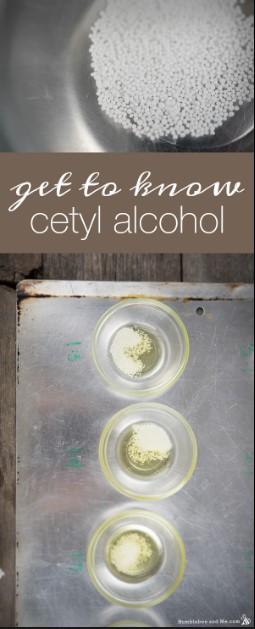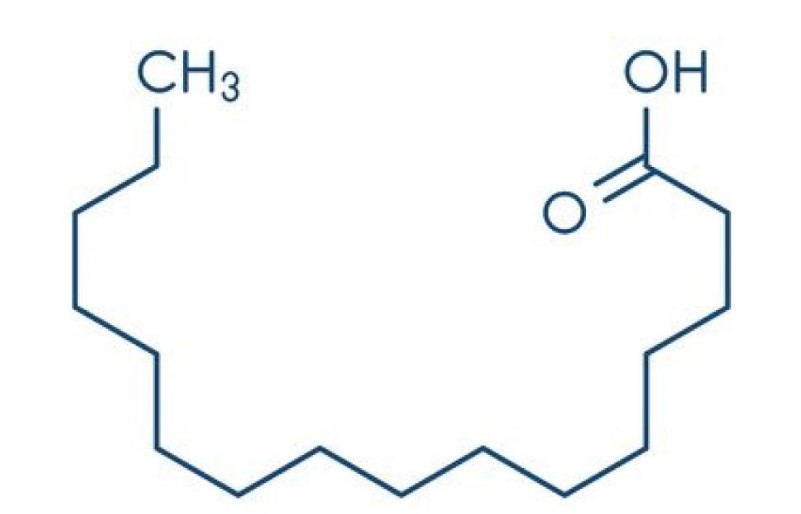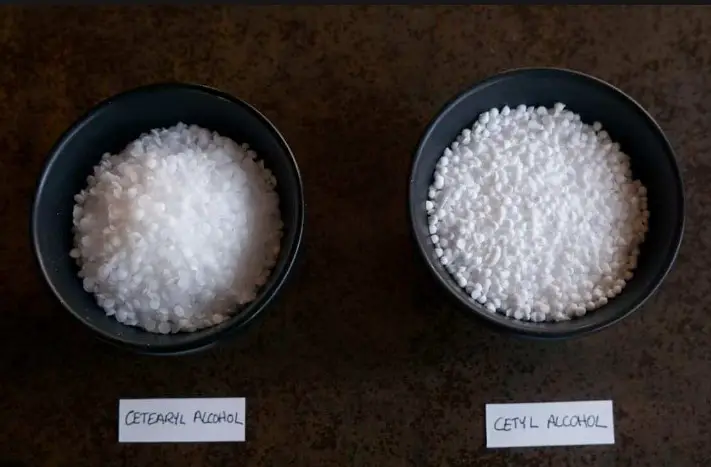In the vast world of skincare ingredients, the distinction between cetyl alcohol and stearyl alcohol often goes unnoticed by the average consumer. Yet, these substances play crucial roles in the texture, feel, and efficacy of a myriad of personal care products. Both are fatty alcohols, but their differences in molecular structure lead to unique properties and uses.
Cetyl alcohol and stearyl alcohol are both non-drying, fatty alcohols used in cosmetics and skincare products. Cetyl alcohol, with 16 carbon atoms, primarily acts as an emollient and emulsifier. Stearyl alcohol, containing 18 carbon atoms, serves similar purposes but can provide a slightly heavier feel to formulations. Their primary distinction lies in their carbon chain length, which influences their physical properties and applications in products.
These ingredients are not only pivotal for maintaining the stability and performance of skincare formulations but also play a significant role in moisturizing the skin. By understanding their characteristics and how they contribute to product formulations, consumers can make more informed choices about the products they use on their skin.

Basic Concepts
Alcohols in Skincare: Role and Types
In the realm of skincare, the term “alcohol” encompasses a wide range of compounds, each playing a unique role in cosmetic formulations. Broadly categorized into two main types: simple alcohols and fatty alcohols. Simple alcohols, such as ethanol or isopropyl alcohol, are often used for their antiseptic properties but can be drying or irritating to sensitive skin. On the other hand, fatty alcohols like cetyl and stearyl alcohol are known for their moisturizing and emollient qualities, enhancing the skin’s hydration and the product’s overall texture without the adverse effects associated with their simpler counterparts.
Cetyl Alcohol Overview
Definition and Properties
Cetyl alcohol, a fatty alcohol with the chemical formula C16H34O, is derived from natural oils and fats or synthesized artificially. It is non-irritating and non-toxic, making it suitable for even sensitive skin types. This ingredient is valued for its emollient properties, helping to soften the skin and retain moisture. Moreover, cetyl alcohol acts as an emulsifier, enabling the mixture of water and oils in cosmetic products, leading to a smooth, creamy texture.
Stearyl Alcohol Overview
Definition and Properties
Stearyl alcohol, another beneficial fatty alcohol, has a slightly longer carbon chain, with the formula C18H38O. Like cetyl alcohol, it is derived from vegetable sources or synthesized in a lab. Stearyl alcohol is prized for its conditioning properties, contributing to the suppleness and moisture retention of the skin. It also plays a critical role as an emulsifier and thickening agent in a variety of skincare and haircare products.
Chemical Structures
Molecular Differences
The primary difference between cetyl and stearyl alcohol lies in their molecular structures. Cetyl alcohol contains 16 carbon atoms, while stearyl alcohol has 18. This difference, though seemingly small, affects their physical properties and how they interact with other ingredients in cosmetic formulations.
Comparison of Molecular Formulas
- Cetyl Alcohol: C16H34O
- Stearyl Alcohol: C18H38O
The presence of additional carbon atoms in stearyl alcohol makes it slightly heavier and gives it a richer texture compared to cetyl alcohol.
Physical Properties
Boiling Points, Melting Points, Solubility
Both cetyl and stearyl alcohols have high melting points, making them solid at room temperature. This characteristic is essential for giving creams and lotions their thickness and stability. While their boiling points are too high to be relevant in skincare application, their solubility in both oils and water makes them ideal emulsifiers.
- Cetyl Alcohol: Melts around 49°C (120°F)
- Stearyl Alcohol: Melts around 59°C (138°F)
Their solubility in oil contributes to the silky, non-greasy feel of the products they are formulated in.
Functions in Products
Moisturizing Effects
Both cetyl and stearyl alcohol are outstanding moisturizers. They work by forming an occlusive layer on the skin’s surface, trapping moisture and preventing it from evaporating. This effect not only helps to keep the skin hydrated but also makes it feel smoother and softer.
Emulsion Stabilization
One of the key roles of these fatty alcohols in skincare products is emulsion stabilization. They help water and oil to mix, creating a uniform and stable product that does not separate over time. This is crucial for the consistency and efficacy of lotions and creams.
Viscosity and Feel
Cetyl and stearyl alcohol are vital for adjusting the viscosity of cosmetic products. They can thicken formulations, contributing to a richer, more luxurious feel. Moreover, they impact the final product’s application experience, making it smooth and easy to spread on the skin without feeling sticky or greasy.

Applications
Cetyl Alcohol Uses
Cetyl alcohol is a versatile ingredient found in a variety of skincare and cosmetic products. Its primary function is to improve the texture and feel of the final product, making it smoother and more pleasant to apply. Common applications include:
- Moisturizers: Enhances skin hydration by forming a barrier that prevents moisture loss.
- Conditioners: Used in hair care to soften and detangle hair, making it easier to manage.
- Creams and Lotions: Acts as a thickening agent, contributing to the luxurious feel of these products.
- Makeup: Provides a smooth base for makeup products, improving application and wear.
Stearyl Alcohol Uses
Stearyl alcohol, with its slightly heavier texture compared to cetyl alcohol, finds its place in products designed for intensive hydration and nourishment. Its uses span across:
- Heavy Creams and Butters: Ideal for dry skin types, stearyl alcohol helps to lock in moisture for extended periods.
- Hair Conditioning Products: Adds softness and reduces static, making hair smoother and less frizzy.
- Protective Barriers: In products like lip balms, it forms a protective layer against harsh environmental conditions.
- Cleansing Products: Helps to stabilize formulas, ensuring they cleanse effectively without stripping the skin.
Combined Uses
Utilizing both cetyl and stearyl alcohol in formulations can offer enhanced benefits, including:
- Balanced Texture: Combining these alcohols allows formulators to achieve the perfect balance between light and heavy textures.
- Improved Stability: Their emulsifying properties help maintain product consistency over time.
- Versatile Formulations: Enables the creation of products suitable for a wider range of skin types and needs.
Safety and Sensitivity
Irritation Potential
Both cetyl and stearyl alcohol are considered low irritation risks, especially compared to other types of alcohols used in skincare. However, as with any ingredient, individual reactions can vary. Generally, these fatty alcohols are well-tolerated by most skin types.
Allergenic Concerns
Allergic reactions to cetyl and stearyl alcohol are rare but not unheard of. Symptoms can include redness, itching, and irritation. It’s important for individuals with sensitive skin to patch test new products, especially if they have known allergies to skincare ingredients.
Safe Concentration Levels
The Cosmetic Ingredient Review (CIR) Expert Panel has evaluated the safety of cetyl and stearyl alcohol, concluding that they are safe to use in cosmetics at concentrations consistent with product formulation needs. Typically, these ingredients are used at concentrations of 1% to 5%.
Environmental Impact
Biodegradability
Cetyl and stearyl alcohols are biodegradable, minimizing their environmental impact compared to non-biodegradable ingredients. Their ability to break down in the environment reduces the potential for pollution and harm to aquatic life.
Production Processes
The sustainability of cetyl and stearyl alcohol production varies by source and manufacturer. Ingredients derived from renewable resources and manufactured using eco-friendly practices are considered more sustainable. Consumers increasingly favor products made with sustainably sourced ingredients.
Consumer Choices
Label Reading Tips
Identifying cetyl and stearyl alcohol in product ingredient lists is straightforward, as they are usually listed by name. However, understanding their function can help consumers make informed decisions about the products they choose. Look for these alcohols in the emollients and thickeners section of the ingredient list.
Selecting the Right Products
When choosing skincare products, consider your skin type and any specific concerns you might have. For those with dry skin, products containing cetyl or stearyl alcohol can offer additional hydration and softness. However, individuals with sensitive skin should patch test products containing these ingredients to ensure compatibility.
Alternatives and Substitutes
For those sensitive to cetyl or stearyl alcohol, there are alternatives that can offer similar benefits without the risk of irritation. Ingredients like caprylic/capric triglyceride or squalane provide moisturization and emollient properties suitable for sensitive skin. Always consult a dermatologist for recommendations tailored to your skin’s needs.
Frequently Asked Questions
What is cetyl alcohol?
Cetyl alcohol is a fatty alcohol found in cosmetic and skincare products. With 16 carbon atoms in its structure, it serves as an effective emollient and emulsifier. It enhances the texture of creams and lotions, making them more spreadable and adding to the product’s overall moisturizing capabilities.
How does stearyl alcohol benefit the skin?
Stearyl alcohol, a fatty alcohol with 18 carbon atoms, benefits the skin by serving as an emollient and emulsifier. It helps to soften and smooth the skin, lock in moisture, and stabilize cosmetic formulations. This alcohol contributes to the creamy texture of skincare products, without leaving a greasy residue.
Can fatty alcohols cause skin irritation?
While fatty alcohols like cetyl and stearyl alcohol are considered safe for most skin types, some individuals may experience sensitivity or allergic reactions. Generally, these alcohols are well-tolerated and are less likely to cause irritation compared to other types of alcohols used in skincare products.
Are cetyl and stearyl alcohols environmentally friendly?
Cetyl and stearyl alcohols are derived from both natural and synthetic sources. Their environmental impact largely depends on their source and the manufacturing process. Biodegradable and sourced from sustainable materials, these fatty alcohols can be considered environmentally friendly. However, the specifics can vary depending on individual product formulations.
Conclusion
The nuanced differences between cetyl and stearyl alcohols illustrate the complexity and sophistication of skincare formulation. Understanding these differences can empower consumers to make informed decisions about their skincare routines, recognizing the impact of individual ingredients on the product’s feel, effectiveness, and suitability for their skin type.
Moreover, as the skincare industry continues to evolve, the significance of these ingredients highlights the ongoing need for consumer education and awareness. By demystifying the roles of cetyl and stearyl alcohols, consumers can better appreciate the science behind their favorite products and the careful balance required to achieve both efficacy and enjoyment in their daily skincare rituals.

